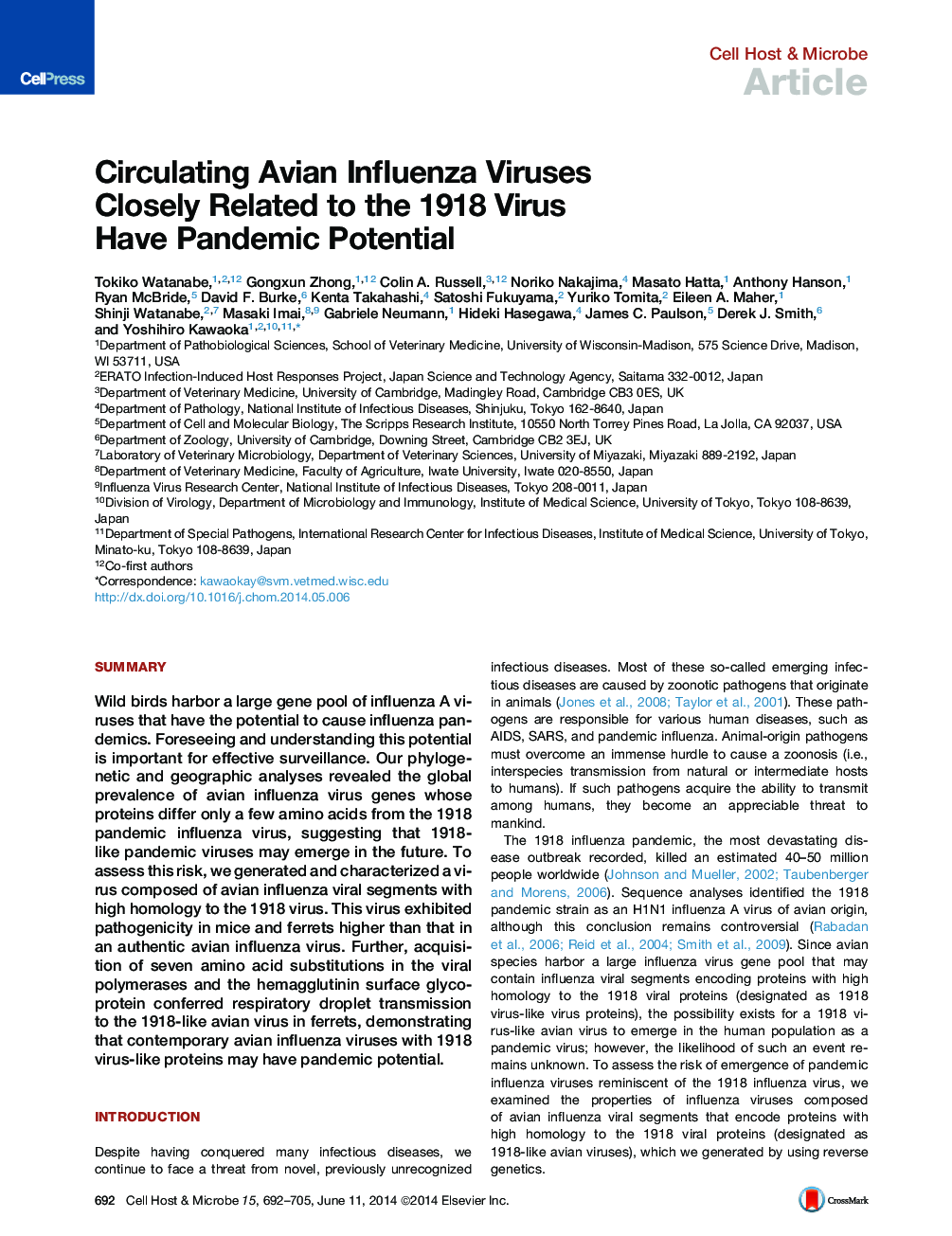| Article ID | Journal | Published Year | Pages | File Type |
|---|---|---|---|---|
| 4361057 | Cell Host & Microbe | 2014 | 14 Pages |
•Current circulating avian flu viruses encode proteins similar to the 1918 virus•A 1918-like virus composed of avian influenza virus segments was generated•The 1918-like virus is more pathogenic in mammals than an authentic avian flu virus•Seven amino acid substitutions were sufficient to confer transmission in ferrets
SummaryWild birds harbor a large gene pool of influenza A viruses that have the potential to cause influenza pandemics. Foreseeing and understanding this potential is important for effective surveillance. Our phylogenetic and geographic analyses revealed the global prevalence of avian influenza virus genes whose proteins differ only a few amino acids from the 1918 pandemic influenza virus, suggesting that 1918-like pandemic viruses may emerge in the future. To assess this risk, we generated and characterized a virus composed of avian influenza viral segments with high homology to the 1918 virus. This virus exhibited pathogenicity in mice and ferrets higher than that in an authentic avian influenza virus. Further, acquisition of seven amino acid substitutions in the viral polymerases and the hemagglutinin surface glycoprotein conferred respiratory droplet transmission to the 1918-like avian virus in ferrets, demonstrating that contemporary avian influenza viruses with 1918 virus-like proteins may have pandemic potential.
Graphical AbstractFigure optionsDownload full-size imageDownload high-quality image (279 K)Download as PowerPoint slide
